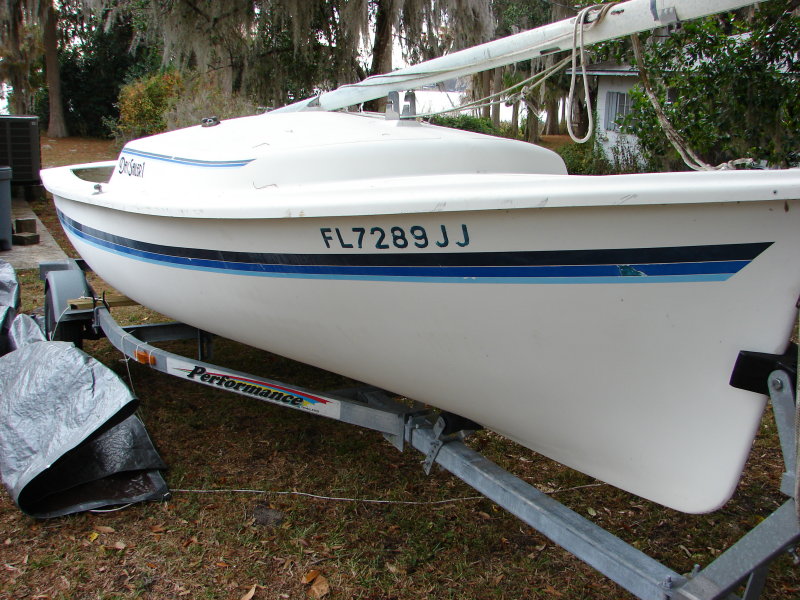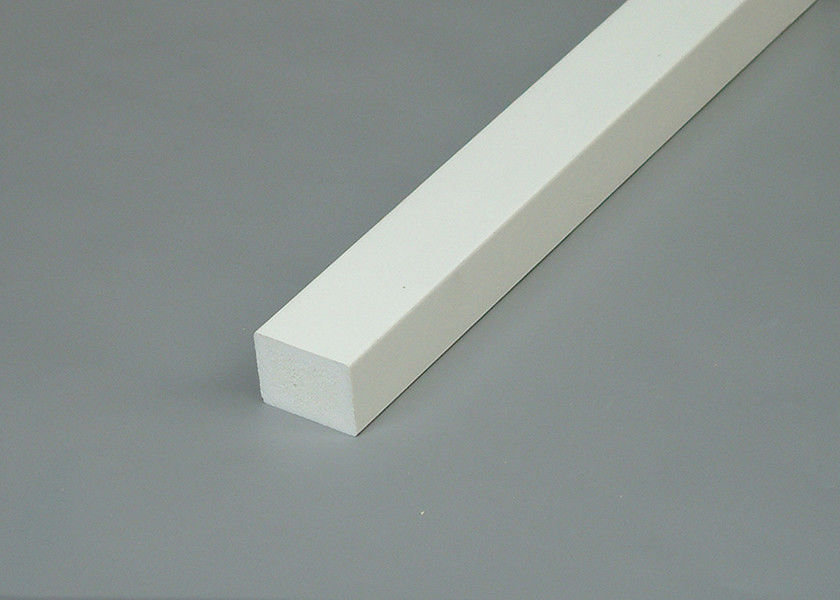Couldn't locate what you mean online, so I can't make a better guess about it's durability. But I guess my main point really is that sometimes what is cheap will also look cheap. And both solutions seem to take about the same installation procedure and effort; and in neither case is it really an option to remove the thing before you sell, for example, because you need to drill holes.
So, my thinking would be, you have a choice of being really cheap, that is, do nothing, and kick this down the road. If you are unlucky, you'll sooner or later bang up that clean joint. Sooner, if you have badly designed docks where you launch, later, if they are well constructed with flat wooden surfaces to rub against. (Yours is an '84, so, if it's been used for 30 years, you have some data on how likely damage is, assuming your usage pattern is similar).
Once you have surface damage, you can always hide it under a rail installation. At that point, you won't measure the boat against its purchase price any longer, which I understand was pretty low in your case, but against its value to you, or perhaps even a re-sale value. That might make you a touch more flexible in your choices of price point

Or, you could figure it this way: you are putting a lot of effort into this, so you might as well do it right. Doing a lot of work (instead of sailing) but hobbling the outcome by being cheap in the wrong place seems misguided. Now, I take all of that back if you are able to produce a good looking robust solution.
The flat surface presented by the joint is an advantage; unlike the traditional DS1 joint, you don't need a U-channel for your rail. The main upside of the solution in your diagram is that it hides the fasteners. You would need to countersink yours so that they don't stand proud, even if a bit of the rubbing strake gets rubbed off. Could be done with a drill press, of you have enough thickness to work with. But you would still change the clean lines of the edge for something that shows a screw head every foot or so. Now, if this was a rubbing strake in teak you could hide the fasteners with bungs, but a wooden rubbing strake is the wrong look anyway.
So, it all boils down to choices. Yours, in this case. I've enjoyed giving you some input, but ultimately, you're the one who needs to be happy.
On balance, I would recommend that, in the absence of a stone pier or something that will simply chew up the boat at any contact whenever you launch her, you might be best of focusing your energies on whatever is required to get her to sail better (and safer). And to spend more time on the water than fixing her up. Unless this is just one addition to a long line of predecessor boats, I suspect your priorities will change quite a bit once you have been out a number of times. I don't know whether you said this either way, but I got the impression that this was your first DS and perhaps first boat. In that case, get to know her first. Good luck!



